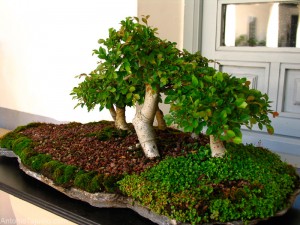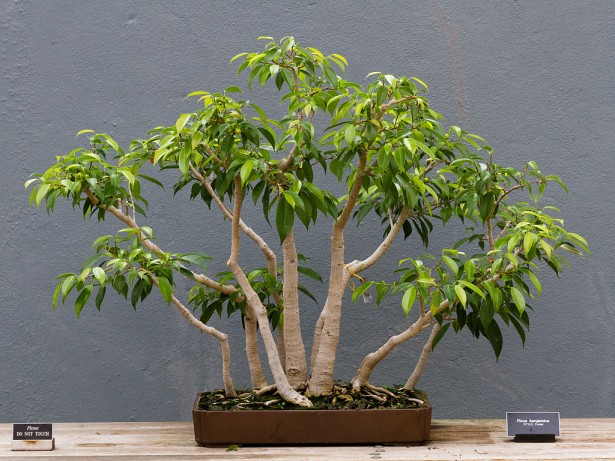Indoor Bonsai Trees – Tender Care

How to Tend Indoor Bonsai Trees
Leisure / Hobbies / The Art of Tree Care
Are you interested in getting an indoor bonsai tree? If you are, then you definitely need to learn about how you can take good care of your unique tree so that it will survive life indoors. (Image Credit: Bonsai, Antonio Tajuelo, flickr.com.)
Disclosure: Some of the links to products on this website are affiliate links. It simply means, at no additional cost to you, I'll earn a commission if you click through and buy any product. Read full disclosure here! Thank you for your support.
As you may know, trees grow outside where there is plenty of moisture, air, and sunlight. It’s important that you pay close attention to the special needs of indoor trees, so that your own bonsai tree will continue to actively grow even if it is indoors.
Is it possible to raise healthy trees inside the house? Yes. However, you have to follow a very precise set of steps to ensure that your tree will remain healthy in its indoor environment.
 (Image Credit: BBG – Ficus benjamina – Forrest, Pierre Selim, Wikimedia Commons.)
(Image Credit: BBG – Ficus benjamina – Forrest, Pierre Selim, Wikimedia Commons.)
Health Steps for an Indoor Bonsai Tree
Now, the very first thing that you should know about indoor bonsai trees is that they need to be fed regularly. By feeding, I simply refer to watering the trees. This might seem like a very simple task for many people… until they begin to forget to water their trees.
To the untrained eye, it would appear that a bonsai tree doesn’t really do much, because it’s so small and its foliage is so limited. However, bonsai artists who have been doing this for a long time will be able to tell just by the color of the leaves if something is wrong.
Recommended Reading
“Beautiful Bonsai: Nature in Tiny Bundles” eBook
The goal of every bonsai artist is to tend to their subjects intelligently, so that the indoor tree is just as healthy as the one planted outdoors. Another important thing that you should know about indoor bonsai trees is that they should get as much sunlight as possible.
Now, I know that this is sometimes impossible, especially if you live in a place where it’s cold most of the time and the sunlight is just not enough to sustain an actively growing tree.
If this is the case for you, then I suggest setting up an artificial lighting system (fluorescent to be exact), so that your tree/s will not die out. There is some evidence that with sufficient fluorescent lighting, bonsai trees will be able to survive.
However, this is not to say that you can do away with natural sunlight completely. If the weather is good, and the sun is out, bonsai trees should definitely be brought outside to soak in natural sunlight for as long as possible.
But there is a caveat – if your plant is a shade-loving one, then you must put your bonsai tree near shade so that the sunlight doesn’t dry it out and kill it. On the flipside, if you are the proud owner of a bonsai tree that lives comfortably in very cold regions, then it doesn’t make any sense to use any heating system indoors.
If you live in a country with a tropical climate, and you obtain a tree from a temperate country, then your tree will most likely enter a fall and winter cycle. Tree hibernation is essential to the life of temperate trees, and if you do not allow the tree to hibernate (e.g. exposing the tree to warm sunlight all the time), then this will also kill the tree.
More INFO: Bonsai Tree Information, Indoor Bonsai Trees for Beginners, Different Types of Bonsai Trees, Bonsai Trees for Sale, Indoor Bonsai Tree Care <<<< HERE!
Buy the “Beautiful Bonsai: Nature in Tiny Bundles” eBook

 Video: Indoor Bonsai Care
Video: Indoor Bonsai Care
[Source: YouTube]
Do you have comments or questions? Please leave them below.
Did you find this article useful? Share it on Social Media below.
Link to this article by using the following URL: https://uniqsource.com/leisure/indoor-bonsai-trees/ COPY + PASTE.


